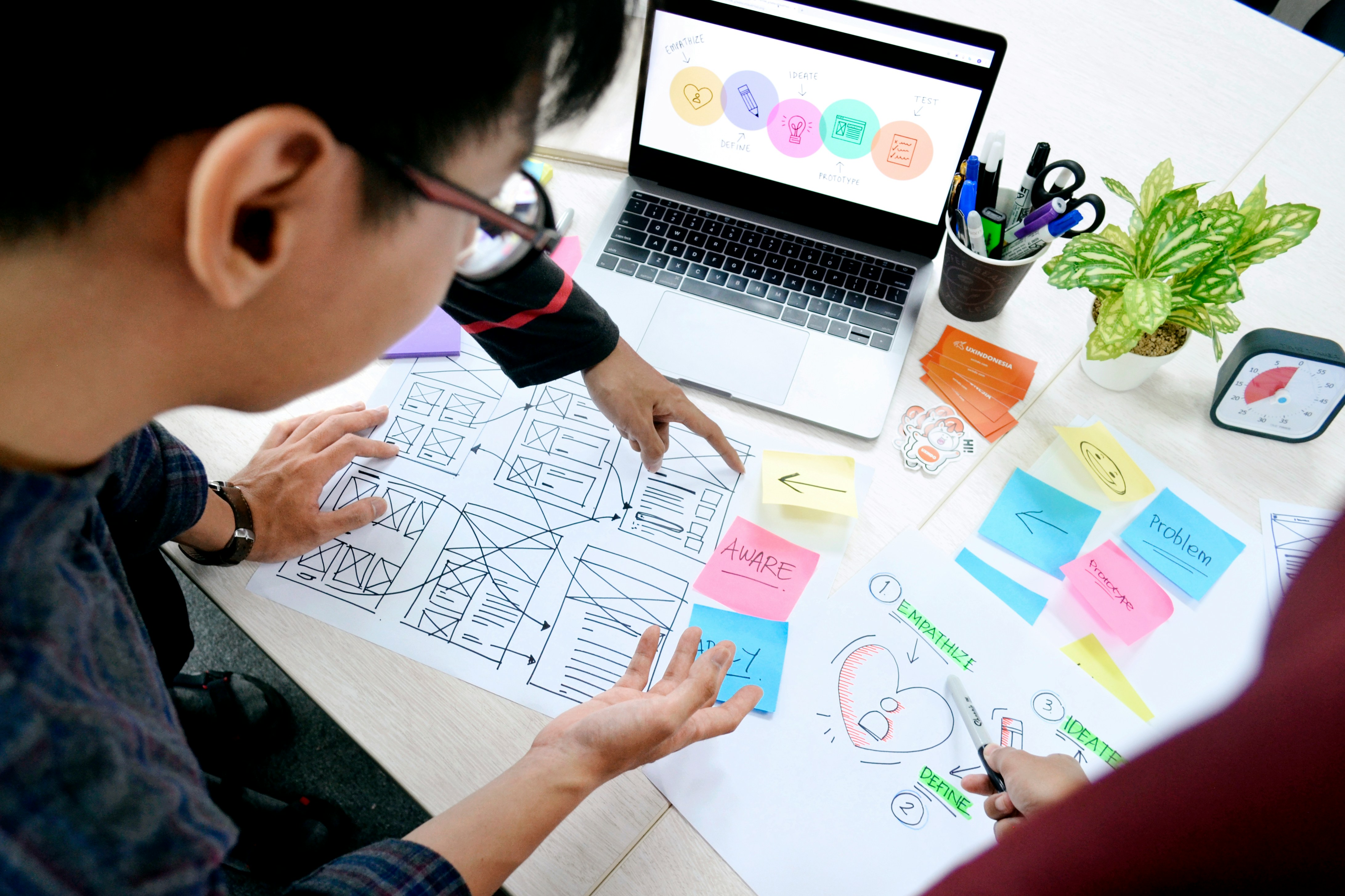November 19, 2024
Website Development vs. Design: How to Create a Perfect Synergy for Your Digital Presence
Introduction: Bridging the Gap
In the digital world, website development and design are often viewed as separate disciplines, but the most successful digital experiences emerge when these two crucial elements work in perfect harmony. Understanding how to create synergy between development and design isn't just about making websites look good – it's about crafting functional, scalable, and engaging digital experiences that drive business results.
The Development-Design Divide
Common challenges organizations face:
Communication gaps between teams
Conflicting priorities and approaches
Technical limitations vs. design aspirations
Timeline and resource management issues
Understanding the Fundamentals
Development Basics
Frontend Development
Core Technologies
HTML5: Structure and content
CSS3: Styling and layout
JavaScript: Interactivity and functionality
Performance Considerations
Load time optimization
Code efficiency
Browser compatibility
Mobile responsiveness
Backend Development
Server-Side Operations
Database management
API integration
Security implementation
Performance optimization
Technical Requirements
Scalability planning
Server configuration
Data management
Integration capabilities
Design Principles
User Experience (UX)
Core Elements
Information architecture
User flow mapping
Interaction design
Usability principles
Design Thinking
User research
Persona development
Journey mapping
Usability testing
Visual Hierarchy
Design Elements
Typography selection
Color theory application
Space utilization
Component hierarchy
Brand Consistency
Style guide implementation
Visual identity maintenance
Brand voice integration
Design system development
Creating Synergy: The Integration Process
1. Planning Phase
Project Scoping
Requirements Gathering
Stakeholder interviews
Technical assessment
Design objectives
Business goals
Resource Allocation
Team composition
Tool selection
Timeline planning
Budget allocation
Communication Protocols
Team Integration
Regular sync meetings
Collaborative tools
Documentation standards
Feedback loops
Workflow Establishment
Project management methodology
Task delegation
Progress tracking
Quality assurance
2. Implementation Strategies
Design Systems
Component Library
Reusable elements
Style documentation
Pattern library
Usage guidelines
Development Framework
Code architecture
Build processes
Testing procedures
Deployment workflows
Version Control
Code Management
Git workflow
Branch strategy
Merge protocols
Release planning
Design Version Control
Asset management
Design history
Collaboration tools
Change tracking
3. Quality Assurance
Testing Protocols
Development Testing
Unit testing
Integration testing
Performance testing
Security audits
Design Testing
Usability testing
A/B testing
Visual QA
Responsive testing
Performance Optimization
Technical Optimization
Code minification
Image optimization
Cache implementation
Server configuration
User Experience Optimization
Load time improvement
Interaction optimization
Content delivery
Mobile experience
Best Practices for Successful Integration
1. Collaborative Workflows
Tool Integration
Design Tools
Figma/Adobe XD
Sketch
InVision
Zeplin
Development Tools
VS Code
Git
Docker
Jenkins
Communication Platforms
Project Management
Jira
Trello
Asana
Monday.com
Communication Tools
Slack
Microsoft Teams
Zoom
Discord
2. Documentation Standards
Technical Documentation
Code Documentation
API documentation
Code comments
README files
Setup guides
Design Documentation
Style guides
Component libraries
Design systems
Pattern libraries
Case Studies: Successful Integration Examples
1. E-commerce Platform Redesign
Challenge:
Complex product catalog
High performance requirements
Multiple user touchpoints
Mobile-first approach needed
Solution:
Integrated team structure
Component-based development
Progressive enhancement
Performance-first design
Results:
45% faster page load
65% higher conversion rate
85% positive user feedback
35% reduced development time
2. SaaS Dashboard Development
Challenge:
Complex data visualization
Real-time updates
Multiple user roles
Scalability requirements
Solution:
Modular architecture
Design system implementation
API-first approach
Collaborative development
Results:
75% faster feature deployment
55% reduced bug reports
95% user satisfaction
40% improved performance
Implementation Roadmap
Phase 1: Foundation (Weeks 1-2)
Team structure setup
Tool selection
Workflow definition
Initial planning
Phase 2: Development (Weeks 3-6)
Design system creation
Component development
Integration testing
Performance optimization
Phase 3: Refinement (Weeks 7-8)
User testing
Performance tuning
Documentation
Launch preparation
Measuring Success
Key Performance Indicators
Technical Metrics
Page load time
Code quality scores
Error rates
Mobile performance
Design Metrics
User engagement
Task completion rates
Satisfaction scores
Conversion rates
Conclusion: The Path to Perfect Synergy
Creating harmony between website development and design is an ongoing process that requires:
Clear communication
Established workflows
Proper tools
Continuous improvement
Next Steps for Implementation
Assess Current State
Team capabilities
Technical infrastructure
Design processes
Integration opportunities
Create Action Plan
Define objectives
Set timelines
Allocate resources
Establish metrics
Begin Integration
implement tools
Train teams
Monitor progress
Adjust as needed
Ready to create perfect synergy between your website's development and design? Contact Alenikos today for a free consultation and discover how we can help transform your digital presence.
From the blog
The latest industry news, interviews, technologies, and resources.



